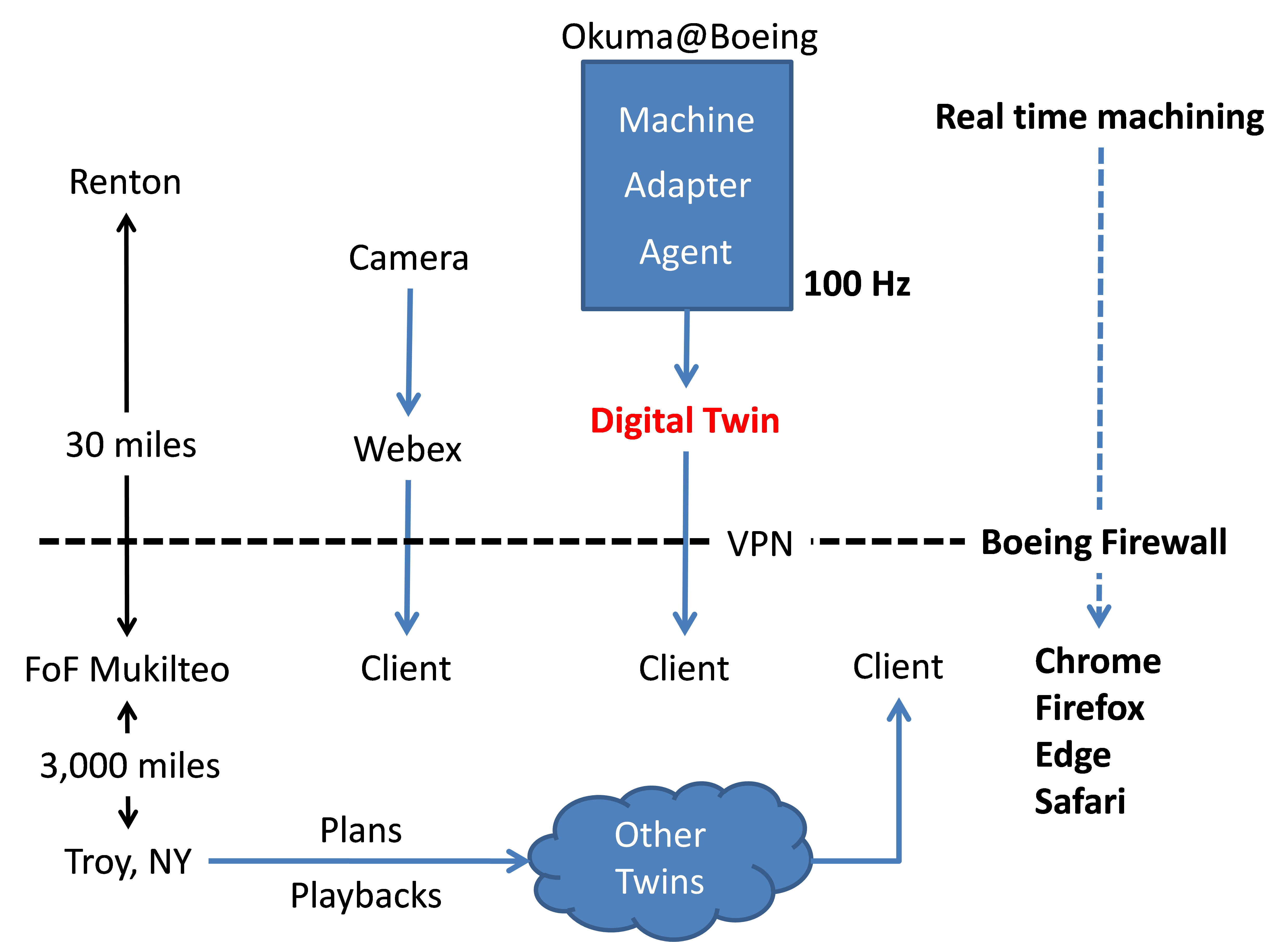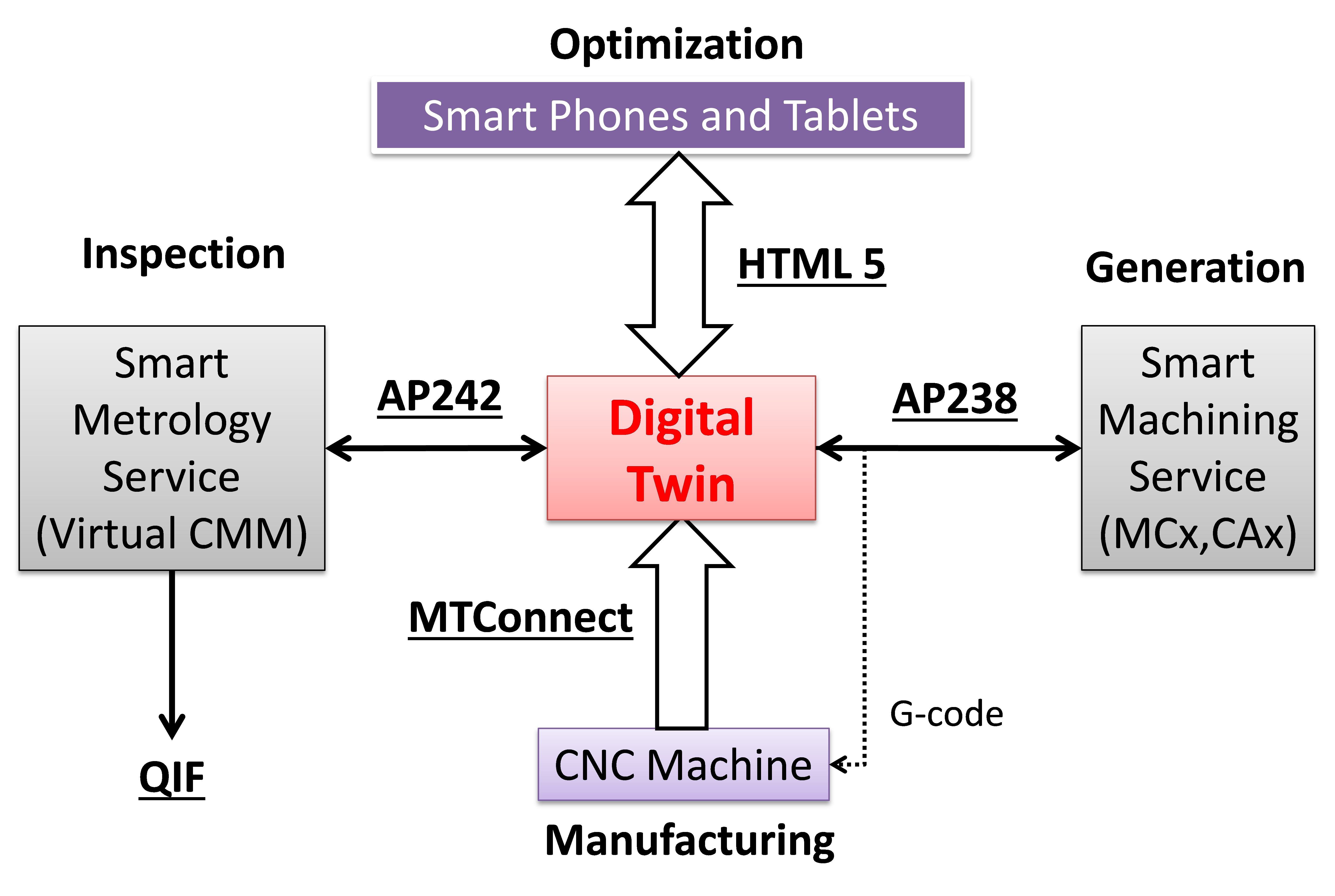2016-10-23
Digital Thread and Digital Twin Demonstrations at Future of Flight
On October 5th, 2016, at the Future of Flight museum in Mukilteo, Washington, three audiences from OMAC, Boeing, and the ISO TC184/SC4 digital manufacturing team saw a demonstration of standards-based digital thread and digital twins:
- A standards based digital thread was used to update a machining “twin” model in real time
- The machining model was measured using on-line software, and off-line using a CMM.
- New automations becomes possible when machining is measured in real time. They showed the feeds being made 15% more efficient by monitoring chip thickness.
The machining that took place in the Boeing Renton plant 30 miles away was modeled in a digital twin in Mukilteo. The twin was measured in real time in the room where the demonstration was taking place, and in the basement where a CMM had been installed for that purpose. The model included design requirements and process plan data. At each stage of the process plan, the machining results were checked against the design requirements for that stage.

The machining was tracked at a rate of 100 times a second (100 Hz). This compares to the 60 times a second that a typical computer screen is refreshed. The real-time tracking was validated using a camera in the machine that showed the same machining movements as the simulation. Design requirements were communicated using the STEP AP242 protocol. Manufacturing solutions were communicated using the STEP-NC AP238 protocol. A digital twin was built from an MTConnect stream delivered over the Internet from the machining system. The digital twin was measured for conformance to its design requirements by real and virtual CMM’s. The measurement results were sent to assembly using QIF.

Takeaways from the demonstration include:
- The digital thread reduces costs by enabling the use of cloud services
- Services to generate and optimize machining and measurement solutions
- Services to select machines and cutters, and optimize the schedule
- The digital thread enables scientific shop floor control
- Manufacture faster when the schedule is tight
- Manufacture with less tool wear when the schedule is open
- The digital thread enables real-time measurements and adjustments
- Change process for actual stock sizes, validate changes from smart phones
- Deliver digital data for assembly simulation and digital assembly
- The digital thread enhances the product
- Designers, planners and machinists share results and see each other’s solutions
- Maintenance and third parties see requirements and help optimize solutions
A second demonstration is being planned for February in which a tool wear issue will be identified by monitoring power consumption and an operator will be “tweeted” to come and check dimensions before machining continues. A third demonstration in July will integrate additive and subtractive manufacturing.
Acknowledgements
The demonstration was made possible by the Digital Design and Manufacturing Innovation Institute (DMDII) in two projects known as “Mind the Gap” (14-02-02) and “O3” (14-06-05).